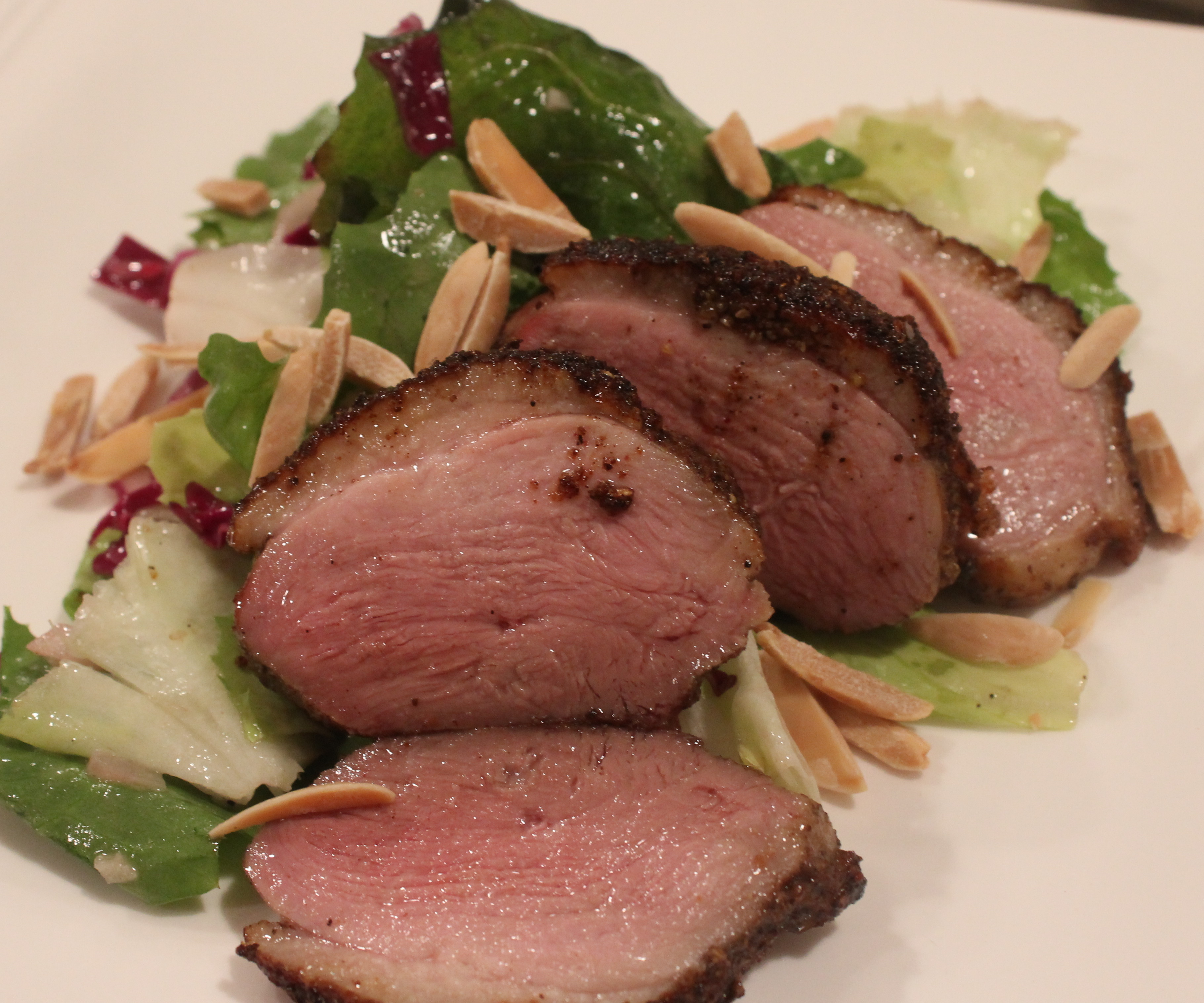Recently Suzen offered a class with an intriguing complexity of flavors: slices of duck breast served atop a red cabbage salad with almonds.
Lots of flavor and lots texture. For us carnivores, the cabbage is nice, almonds are nice, but that duck has to be perfect. How to achieve perfection? I could paraphrase, but I would prefer to quote the entire section on duck breasts from James Peterson in his treasure Glorious French Food:
“When you sauté a duck breast you get rid of most of the fat in the skin and have perfect control over how much to cook the meat. French cooks roast whole duck to a red-pink medium rare and wild ducks even rarer. Don’t think of duck as you would chicken or turkey, which is cooked completely through, to the equivalent of medium for red meet. When you cook duck breasts, you can peel off the fatty skin and sauté the breasts as you would a little steak, leave the mat rare to medium rare and providing a piece of meat leaner that a boneless chicken breast and quite a bit tastier.
“But because much of the duck’s flavor is that lay of at on the beast, you’ll want to capture the best of both possible words, — crispy flavorful skin with much of the excess fat cooked out and juice rare-to-medium-rare meat. To do this, make a series of thin slashes diagonally across the skin of each breast, cutting as deep into the skin as you can without cutting all the way down to the meat, so you end up with about 20 slashes. Give the breast a 90-degree turn and make a new series of about 20 slashes that cross over the other ones. The slashes l expose much of the fat contained in the skin to it will render quickly in the sauté pan.
“Season the breasts with salt and pepper and sauté them skin-side down over medium to high heat in a pan just large enough to fit them — there’s no need to put oil in the pan — 8 to 10 minutes for Long Island duckling breasts [12 to 14 for mulard], or until the breasts just begin to feel firm to the touch and skin looks brown and crispy. Turn the breasts over and cook them for 2 minutes [2 minutes for mulard] over high heat, just long enough to brown the flesh side”.
Source: Glorious French Food by James Peterson

